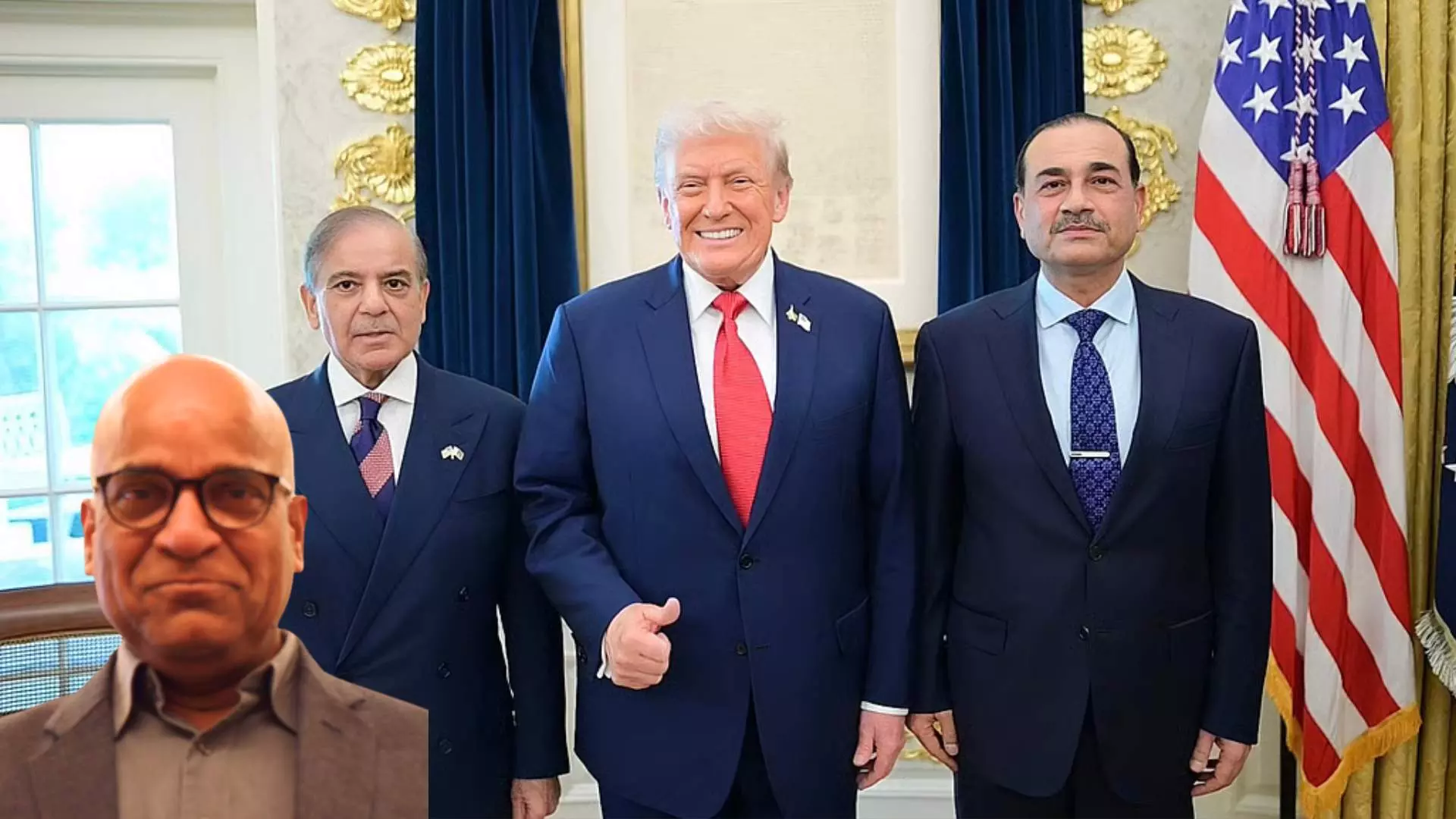
What US-Pakistan thaw means for India and South Asia | Interview
Trump’s meeting with Shehbaz Sharif and Asim Munir signals a reset in US-Pakistan ties. What does this mean for India’s global standing?

The Federal spoke to senior journalist and global affairs expert D Ravi Kanth about the recent White House meeting between US President Donald Trump, Pakistan Prime Minister Shehbaz Sharif, and Pakistan Army Chief General Asim Munir. The discussion sheds light on what this diplomatic shift means for South Asia and India.
Trump once called Pakistan a terrorist haven. What explains this sharp turnaround in his approach?
This meeting took place on Friday morning, when both Pakistan’s prime minister and army chief were invited to the White House. They were reportedly kept waiting for a few minutes before being received.
The shift must be seen in the context of Trump’s second term. Unlike the frosty ties of his first term and even during the (Joe) Biden administration, Washington’s stance towards Pakistan has changed dramatically over recent months.
The short conflict between India and Pakistan, referred to as Operation Sindoor, has also positioned Trump at the centre of peace claims. He even told the UN General Assembly that he had resolved the conflict. The bilateral defence treaty signed between Pakistan and Saudi Arabia further shaped the backdrop of this meeting.
Discussions likely touched upon counter-terrorism cooperation, security, and even the issue of retaking the Bagram air base from Afghanistan’s Taliban government. Overall, the meeting suggested that Pakistan is attempting to upstage India in Washington’s strategic calculus, even as New Delhi pursues a possible Trump-Modi meeting.
Also read: What did Trump, Sharif and Munir discuss in closed-door meet?
How central are economic interests to this sudden diplomatic warmth?
Alongside security issues, trade ties have seen an uptick. The US and Pakistan signed a trade agreement under which Pakistani goods would face only a 19 per cent tariff. Washington also supported Pakistan in securing an IMF loan, despite India’s objections.
However, Pakistan is not a significant competitor globally, except in textiles, clothing, leather goods, toys, and notably footballs — a product of interest ahead of the World Cup.
The larger issue is strategic rather than economic. Pakistan has presented Trump as a “man of peace” and even nominated him for the Nobel Peace Prize. While this boosts optics, Pakistan’s economy remains in crisis, raising questions about how far the Trump administration will actually go.
Another emerging factor is the proposed strategic Bitcoin reserve involving Pakistan and the US, reportedly with Trump’s second son involved. The IMF opposes such schemes, but US influence makes resistance unlikely.
Also read: Trump declares 100 pc tariff on branded drugs from Oct 1; Indian pharma may be hit
How significant is the military dimension in shaping this new US-Pakistan engagement?
The military angle remains crucial. Historically, the US was Pakistan’s primary defence partner, supplying advanced aircraft such as F-16s. That relationship weakened after issues around terrorism and the Osama bin Laden episode, along with America’s setbacks in Afghanistan.
In recent years, Pakistan has leaned heavily on China for defence cooperation. This makes the US re-engagement significant, though it is unclear if Washington will resume arms sales. Instead, the US may use Pakistan’s role to support Middle Eastern allies like Saudi Arabia, which depend heavily on American arms but require manpower and logistical support that Pakistan can provide.
This adds multiple layers to the strategic game, where defence, regional security, and Pakistan’s positioning with both the US and China converge.
How could this warming of ties between Washington and Islamabad affect India’s strategic position?
India often appears overly focused on US-Pakistan relations. While Pakistan plays its cards with Washington, it is a much smaller economy compared to India, which is now valued at $4 trillion.
The current Indian government, however, has turned the Pakistan factor into a central issue, amplifying tensions whenever Washington engages Islamabad. This serves Western interests, which have historically sought to keep South Asia on edge.
Instead, India should treat US-Pakistan ties as just one element in a larger strategic puzzle. Other priorities, such as India’s relationship with China and its own growing global weight, are far more consequential.
Even if Washington works with Pakistan, it does not diminish India’s importance as one of the world’s largest economies and a critical partner for the US.
(The content above has been transcribed from video using a fine-tuned AI model. To ensure accuracy, quality, and editorial integrity, we employ a Human-In-The-Loop (HITL) process. While AI assists in creating the initial draft, our experienced editorial team carefully reviews, edits, and refines the content before publication. At The Federal, we combine the efficiency of AI with the expertise of human editors to deliver reliable and insightful journalism.)

